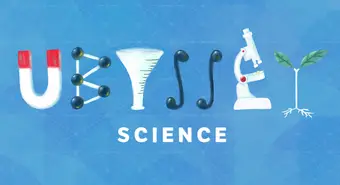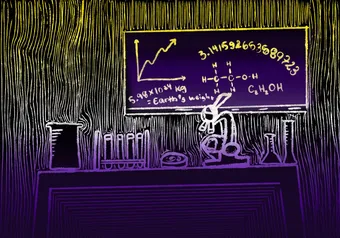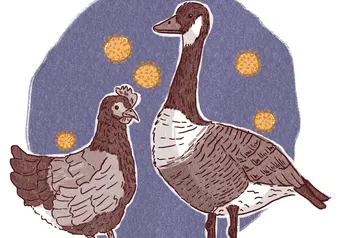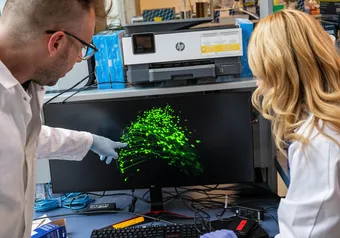The weather might have started to get cold, but UBC researchers deliver hot studies and findings all year round. Here are a few “hot” UBC research to check out while you wrap yourself with your blanket scarf and sip on your Pumpkin Spice Latte.
Cancer’s “invisibility cloak” countered
Cancer spreading from its original location is more than just a logistical nightmare — this spreading, called metastasis, can create new tumours that are “invisible” to your immune system. And while we’re still unable to reverse this, UBC researchers have recently discovered how specific types of cancers achieve such a phenomenon.
The research suggest that epithelial carcinomas (cancers that begin in organs like the prostate, kidneys, breasts and lungs) lose a protein that the immune system uses to tell whether cells are cancerous or not. Without the IL-33, these metastatic cancer cells are invisible to the immune system.
The researchers found that introducing IL-33 back into these metastatic cancers allowed the body to once again recognize these cancer cells as undesirables and are currently determining if this could be a viable strategy for future treatment.
New treatment against drug-resistant abscesses
Abscesses are bacteria-induced, pus-filled lesions that are warm to touch and typically painful. They can happen most anywhere in the body and the standard treatment involves cutting out or draining the infected tissue. This invasive procedure may soon be out of style, as UBC researchers recently discovered a new way to target these infections by using a synthetic protein.
As bacteria in the abscesses are in a stress-triggered growth state, the synthetic protein disrupts the stress response pathway, healing it in the process. The peptide works with the two major bacterial classes whose different cell wall structures usually require differing antibiotics. The researchers have only done the treatment on mice, but are hoping to start human clinical trials within the year.
COPD cases to increase despite the decline in smoking
Despite the widespread decline of smoking rates in the industrialized world, a UBC study suggests that the number of chronic obstructive pulmonary disease (COPD) cases in BC will increase by more than 150 per cent between 2010 and 2030. COPD is a lung disease characterized by long-term poor airflow and was previously known as emphysema. It is commonly associated with tobacco smoking and air pollution.
The study states that this province-wide health care epidemic will most likely be due to the population’s demographics — the aging “baby boom” generation. In fact, among seniors over the age of 75, they expect the rates of COPD to more than triple. They referred to COPD as “a disease of aging,” citing that even if everyone stopped smoking tomorrow, it would still be several decades before the number of COPD cases would drop.
While these predictions were primarily done using BC’s population data and within the province’s health care infrastructure, the researchers believe it to be applicable to the rest of Canada and many other similar countries.
New asthma treatment
Severe asthma is a debilitating and potentially fatal form of the disease. People suffering from severe asthma often experience frequent asthma attacks characterized by swollen and inflamed airways, resulting into troubled breathing. Uncontrolled asthma often leads to a dependence on oral steroids, which could lead to serious and often irreversible effects.
A clinical trial discovered a potentially new treatment for severe asthma that involves the use of an antibody. As most patients with severe asthma have high levels of eosinophils — white blood cells that are associated asthma — in their blood, the researchers used an anti-eosinophil antibody alongside their standard asthma treatment. Their patients showed an up to 50 per cent reduction in asthma attacks, improved lung function and alleviated asthma symptoms.
The drug has just finished its Phase 3 Canadian Trials and now pending US and EU approval.
[Sorry, video not found. You can contact webmaster@ubyssey.ca to fix the issue]
“Nature’s Cookbook has very similar recipes”
Despite over 140 million years of independent evolution — roughly the time when the last common ancestor for kangaroos and humans existed — a recent study showed that two types of coniferous trees use the same set of 47 genes to adapt to the changing climate.
Trees have about a thousand or so genes they can “turn off or on” to deal with changes in temperature and moisture. It was previously thought there would be multiple different ways trees adapt to the changing environment. That these two distantly-related trees use variation within the same small set of genes reveal some limits to successful adaptation, and could help scientists further understand how to help trees adapt quickly. These findings provide critical information with regards to forest management, especially with the rapidly changing climate. Researchers suggest that gene variation in this 47 gene set could shed light on how effectively trees would be able to adapt to the changing climate, understand how current forests would respond to various changes and even help in reforestation decisions regarding the stage at which saplings are planted in specific locations.
First online
Share this article



![['']](https://storage.googleapis.com/ubyssey/media/renditions/bacteria.width-1000.format-webp.webp)
![['']](https://storage.googleapis.com/ubyssey/media/renditions/wpid-Smoking_20110722__Geoff-Lis.width-1000.format-webp.webp)





